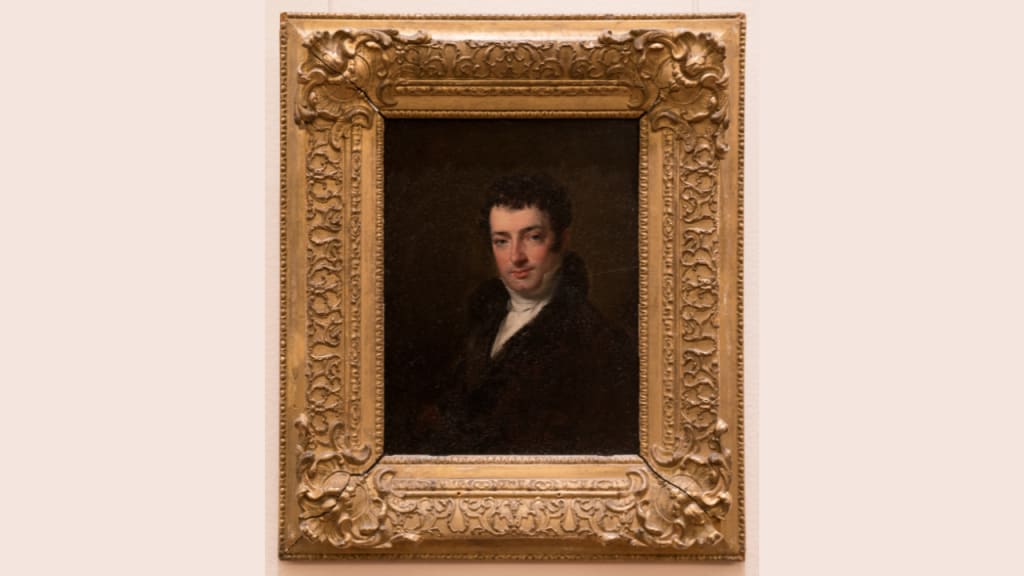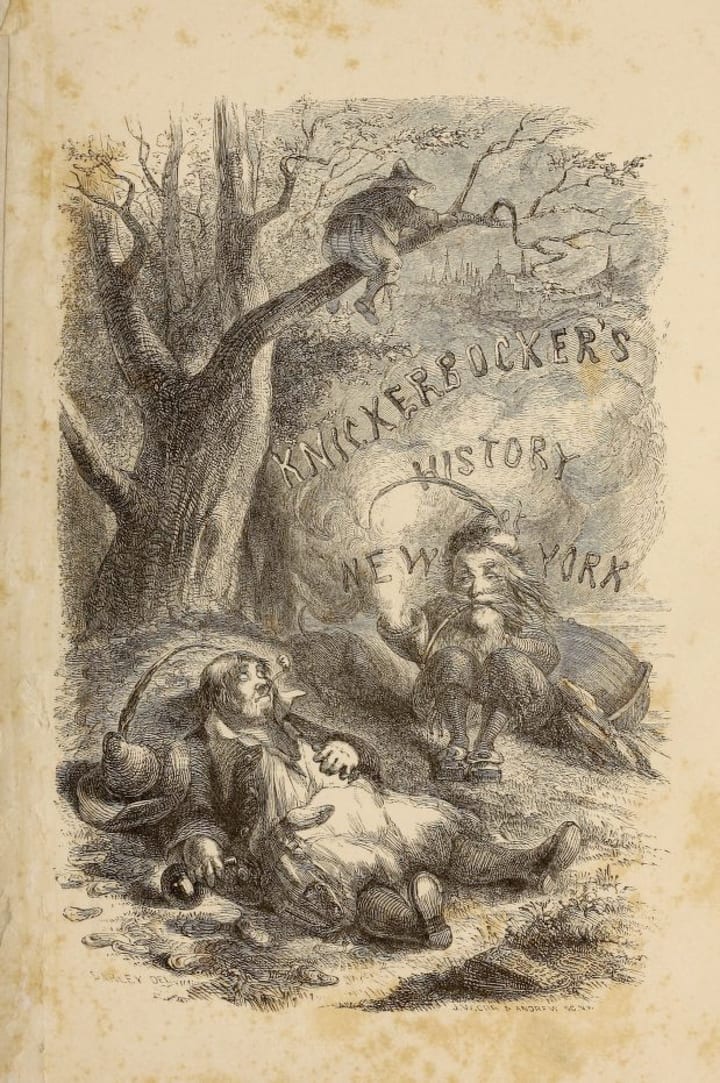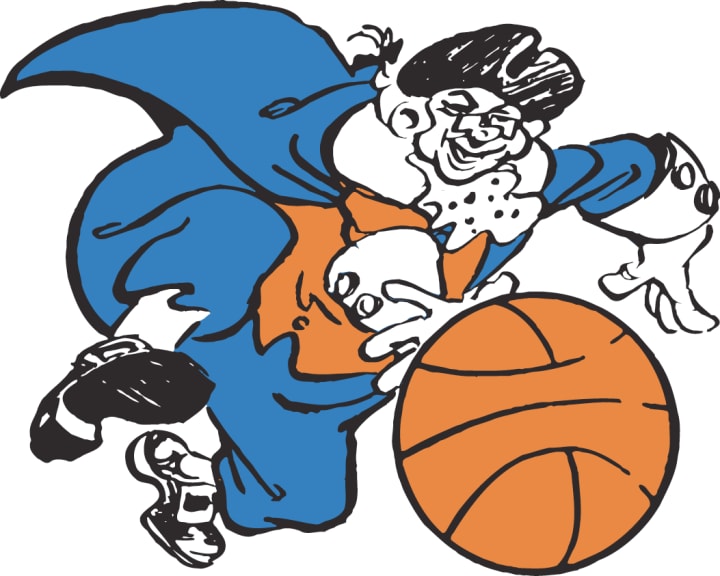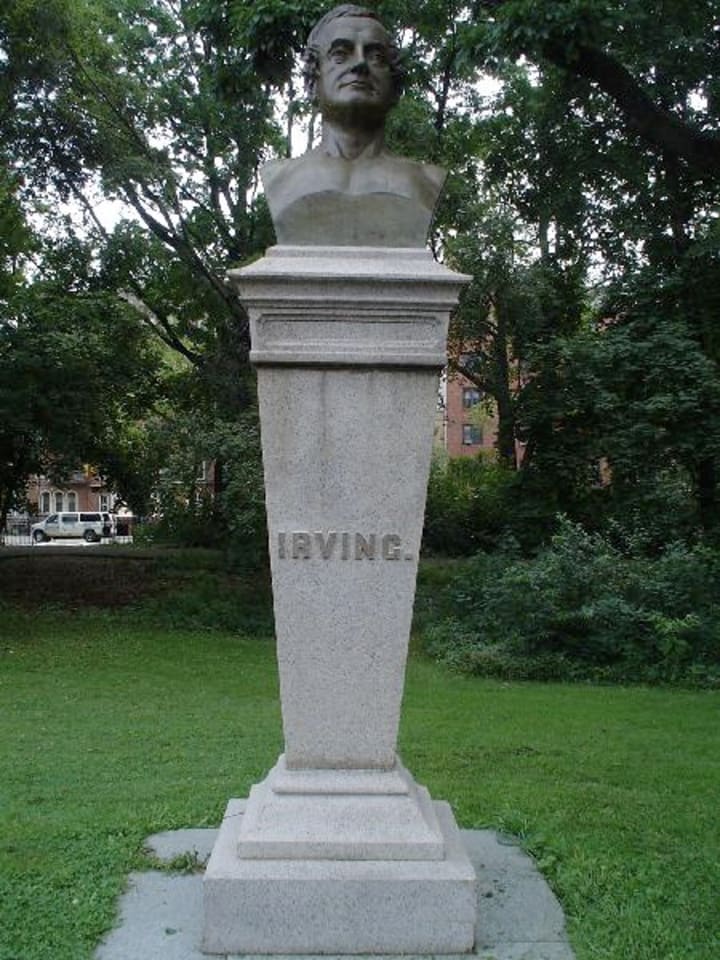Getting to Know the Original Knickerbocker and the Father of the American Short Story
Washington Irving gave us 'Rip Van Winkle' and a sports team's moniker

In Dec. 1809, a little-known writer came out with a book with a wordy title. A History of New York from the Beginning of the World to the End of the Dutch Dynasty was a satirical account of New York’s Dutch past when it was called New Amsterdam.
The book’s creator, Washington Irving, published it using a pen name, Diedrich Knickerbocker. And Knickerbocker narrates the book.

Irving and his brother, Peter, first planned for A History of New York to parody a pamphlet they’d read titled “A Picture of New York.” But Peter left New York for Europe, and Washington Irving took control of the project.
Washington Irving realized that, at the time, most New Yorkers knew nothing of the city’s founding as a Dutch colony. So, he conceived of an entertaining and somewhat fictitious way of educating them.
A History of New York helped New Yorkers better understand their city’s and state’s history. Irving took liberty with some historical details, though. As he wrote in the introduction to an 1848 edition of the book, “If it has taken an unwarrantable liberty with our early provincial history, it has at least turned attention to that history, and provoked research.”
Written Into American Folklore
The book also introduced Irving to many American readers. A decade later, he captured their hearts with a story collection titled, The Sketch Book of Geoffrey Crayon, Gent.
Irving wrote it while living in England, but the volume contained some tales set in the United States. These included the now-classic stories “Rip Van Winkle” and “The Legend of Sleepy Hollow.”
“Rip Van Winkle” is narrated by the character Irving first used in A History of New York, Diedrich Knickerbocker. Soon, New Yorkers started referring to the city’s Dutch ancestors as “Knickerbockers.”
By the mid-1800s, the term applied to all New York City residents. And a Manhattan baseball team started in 1845, calling itself the New York Knickerbockers.
One-hundred-and-one years later, in 1946, a new team in the Basketball Association of America needed a name. So the team’s owner and staff wrote ideas onto scraps of paper tossed into a hat.
Someone pulled one of the pieces out. On it was scrawled the word, “Knickerbockers.” We now know the club as the National Basketball Association’s New York Knicks.

Irving’s noted not only for giving New Yorkers and their basketball team a name. Many call him the father of the American short story. And Irving wrote into stories some Christmas traditions we still practice. For example, he’s the writer who first introduced people in the U.S. to Santa Claus and to kissing under the mistletoe.
These days, you can see a bust of Washington Irving in Prospect Park, located in New York’s Brooklyn borough. The memorial sits in Concert Grove, on the park’s east side near Ocean Avenue. The sculpture rests on an inverted pyramid above a simple inscription: “Irving.”
Washington Irving
- Born on Apr. 3, 1783, New York, N.Y.
- Died on Nov. 28, 1859, Tarrytown, N.Y.

Sources
- "Washington Irving Memorial." NYC Parks. The City of New York.
- "Prospect Park Concert Grove.” New York City Convention & Visitors Bureau.
- "Tribute to Irving." The New York Times. July 2, 1871.
- "Washington Irving." The Editors of Encyclopaedia Britannica. Encyclopaedia Britannica. March 30, 2020.
- "Biography of Washington Irving, Father of the American Short Story." Esther Lombardi. ThoughtCo. Jan. 30, 2020.
- "A History of New York." The Editors of Encyclopaedia Britannica. Encyclopaedia Britannica. Nov. 16, 2016.
- "How Christmas Became Merry." Andrew Burstein. The New York Times. Dec. 25, 2005.
- "Diedrich Knickerbocker." The Editors of Encyclopaedia Britannica. Encyclopaedia Britannica. April 27, 2016.
- "What's a Knickerbocker." National Basketball Association.
About the Creator
Nicholas E. Barron
Farm boy turned freelance writer. 🏳️🌈
Enjoyed the story? Support the Creator.
Subscribe for free to receive all their stories in your feed. You could also pledge your support or give them a one-off tip, letting them know you appreciate their work.






Comments
There are no comments for this story
Be the first to respond and start the conversation.